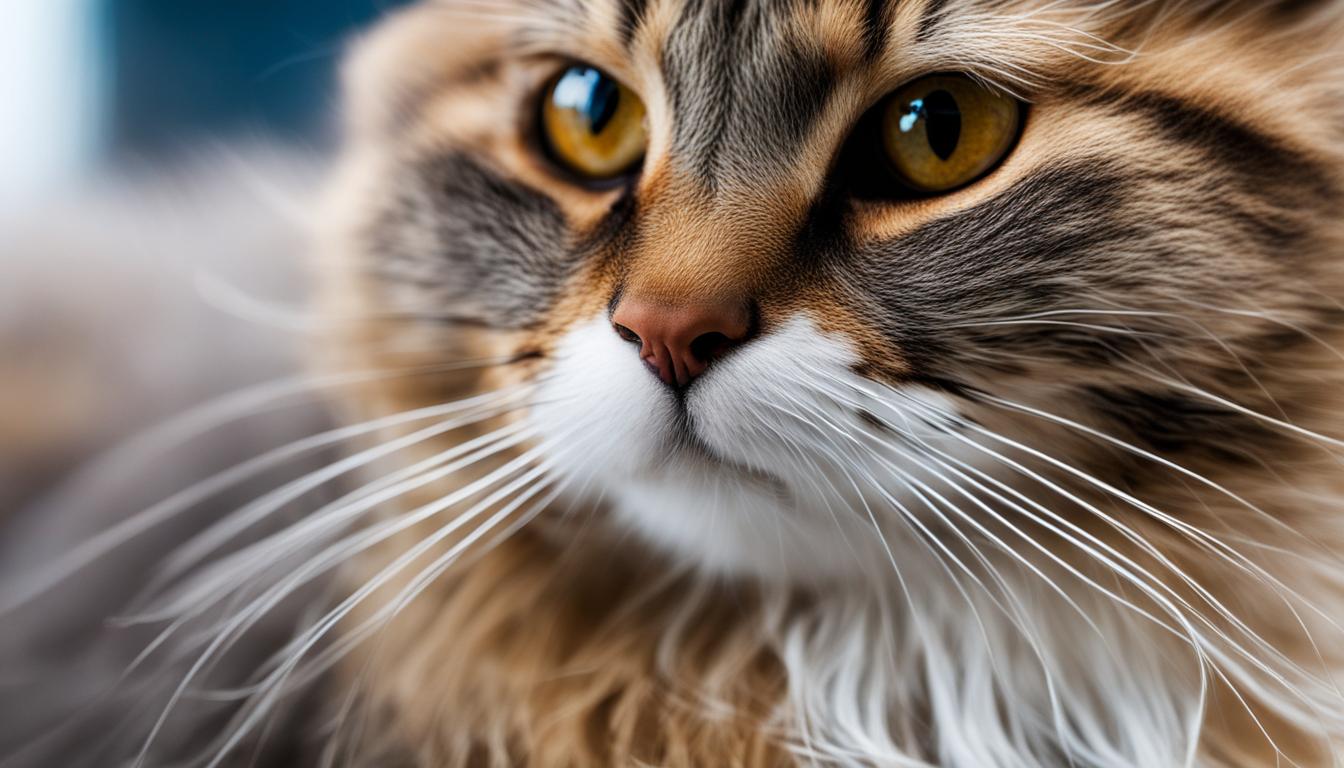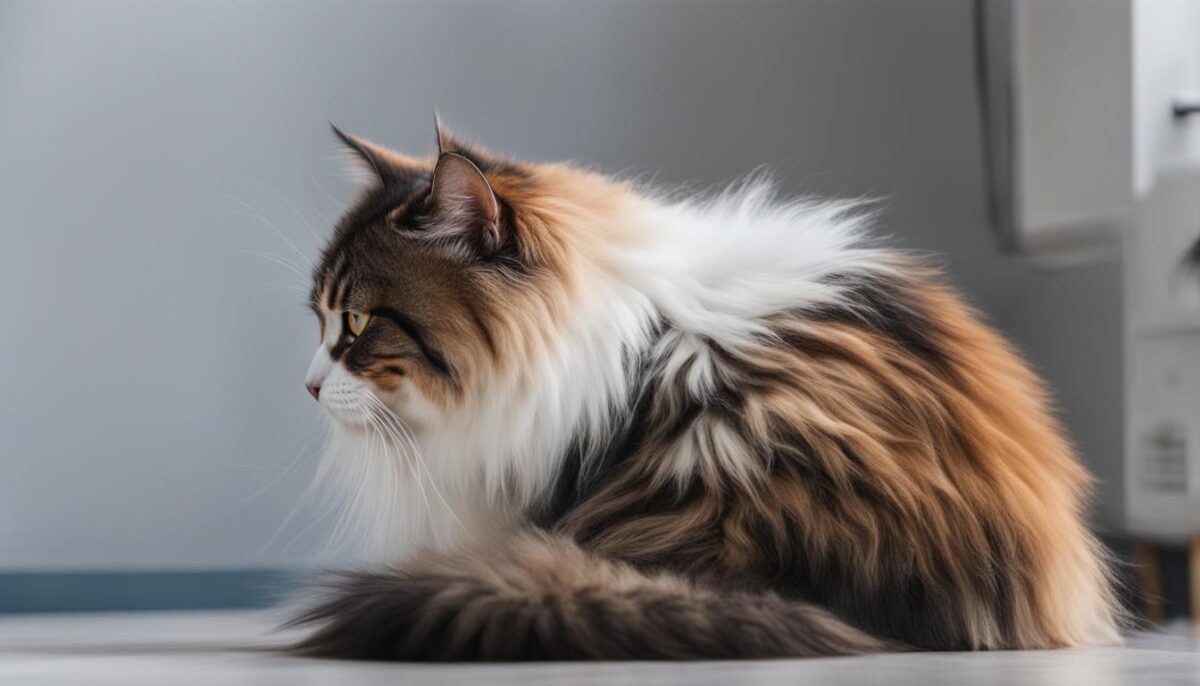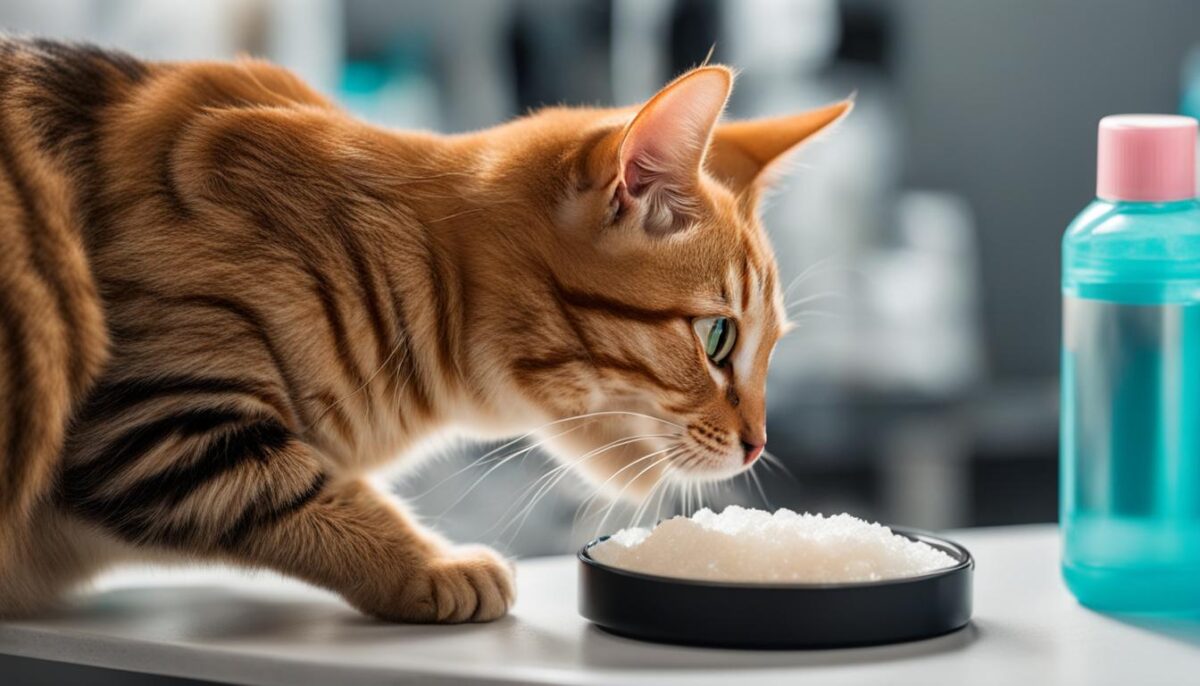Hey there! Did you ever spot some tiny white flakes on your furry friend’s coat? That might be feline dandruff. It’s pretty much what happens when our skin gets dry and flaky, but this is about our cute cats. Those white or gray flakes can mean your cat’s skin needs a little help. Sometimes, a bit of flaking is okay, but too much is a sign to check in with the vet.
So, what can make dandruff pop up in cats? Cats having a tough time staying slim might have trouble reaching all spots to groom well, leading to skin problems. Also, not eating right can mean their skin isn’t getting what it needs to stay healthy. Bad bugs, like fleas, can also make skin flaky. And, sometimes, dandruff tells us that there might be other health issues to look into.
Treatment depends on the cause. It can be as simple as changing what your cat eats, fighting those fleas, taking medicine, or just brushing more often. Let’s help our cats get their shiny, healthy coats back!
Key Takeaways
- Cats can get dandruff just like we do, and it shows up as white or gray flakes.
- If your cat has too much flaking, it’s good to talk to a vet.
- Chubby cats might not groom well, which could lead to dandruff.
- Good food helps keep your cat’s skin in tip-top shape.
- Fleas and other bad critters can give your cat flaky skin.
- There are different ways to treat dandruff, from special baths to yummy, healthy foods.
Understanding Feline Dandruff and Its Common Signs
Is your cat feeling itchy? Are there tiny flakes on their bed? That might be feline dandruff symptoms. Dandruff in cats can be pretty common, and figuring out the cause is important. Just like people, cats can have dry, flaky skin that is uncomfortable. So, how can you tell if your kitty has dandruff? Let’s look at what you should keep an eye out for.
- Scratching more than usual
- Changes in how they act
- Little bugs in their fur (no one wants that!)
- Red or sore spots on their skin
- Walking funny, like something is bothering their paws
- Not cleaning themselves like they used to
- Throwing up more than is normal for them
- Not eating their favorite treats or food
- Going to the bathroom in new places or not at all
- Drinking a lot of water or none at all
- Hair falling out or looking unkempt
If you’re noticing these signs, it’s time to become a detective in detecting cat dandruff. Remember, your furry friend could be dealing with something more serious. It’s kind of like when we don’t feel well. We might get a dry scalp, but it could be because we’re not drinking enough water or because we’re really sick. It’s the same for cats.
Dandruff could be a small thing, but it could also be a sign of cat skin conditions that need a doctor’s help. Here’s a picture to show you a bit of what to look for:
Are you curious about what might be causing the dandruff? Well, there’s a bunch of reasons. Just like with us, if they eat junk food all the time, they might not have the best skin. Or they could be itching because a tiny pest decided to make your cat its new home. Yikes! Anyway, if anything seems out of the ordinary with your kitty’s skin and coat, it’s better to check in with the vet than to guess.
So, keep loving and cuddling your cat, and keep an eye out for signs of dandruff. It’s one way to make sure they stay happy and healthy!
Common Causes of Dandruff in Cats
Did you know that cats can get dandruff just like people do? Let’s find out why this happens.
Struggles of Overweight Cats with Grooming
If your cat is heavier than it should be, grooming can be tough for them. **Overweight cats** might not reach all the spots they need to clean. This can lead to dandruff because they can’t take care of their skin as well.
The Role of Nutrition in Feline Skin Health
What cats eat affects their skin too. **Feline nutrition** is super important. Cats need the right food to keep their skin healthy. Some foods can stop allergies and keep them from getting too skinny or too fat.
External Parasites Leading to Dandruff
Itchy, tiny bugs like fleas are called **external parasites**. They can make cats scratch a lot and cause dandruff. It’s not fun for cats to have these bugs on them.
Health Conditions That May Cause Dandruff Symptoms
Sometimes, dandruff in cats is a clue that something else might be wrong. **Cat health problems** like sore joints, itchy skin, or other diseases might be the cause. If you see dandruff on your cat, it might need a checkup with the vet to stay healthy and happy.
Can Cats Get Dandruff? Examining the Possibility and Implications
Have you ever spotted small, white flakes on your cat’s coat? This could be cat dandruff. It’s a sign of dry skin, but it can also mean more than that. It’s important to understand why it happens. This helps us keep our furry friends happy and healthy.
Just like us, cats can have dandruff because of feline skin health implications. So, when you see dandruff, it means it’s time to take a closer look at your cat’s health. It might be a simple skin issue or something that needs more care.
When you notice dandruff on your cat, think about the air in your home. Is it dry? Also, what kind of food does your cat eat? Their food should help keep their skin healthy. Sometimes, cats get sick, and dandruff is a sign. This is when you should go see a vet. The vet can take a cat dandruff examination and help you find out the cause.
- Check the air in your place – Is it too dry for your cat’s skin?
- Look at what your cat eats – Are they getting the right stuff to help their skin?
- Watch for other signs – Is your cat itchy or acting different?
- Visit the vet – They can help figure out why your cat has dandruff.
Remember, dandruff impact on cats can be more than skin-deep. It can tell us a lot about their overall health. So, keep an eye out and make sure your cat is not just flake-free, but also lively and well.
Diagnosing and Treating Your Cat’s Dandruff
Got white flakes on your cat’s coat? It could be dandruff! Don’t worry, figuring out what to do is easy as petting your furry friend. Sometimes, you might need to take your cat to see a vet. Other times, some good old brushing or changes to what your cat eats can help.
When to Visit the Vet for Dandruff Concerns
If you spot dandruff on your cat along with signs like scratching a lot, acting weird, or sore spots, it’s time to check in with a vet. They’re super good at diagnosing cat dandruff and will help you make sure it’s nothing serious. Your vet can tell you the best feline skin treatments for your cat’s flaky issues.
Grooming Techniques to Reduce Flaking
One of the best cat grooming techniques for keeping dandruff at bay is brushing! Simple, right? Brushing not only keeps your cat’s coat nice and clean but also spreads out the oils that keep their skin from getting dry. Just a few minutes each day can make a big difference.
Medical Treatments for Skin Conditions
When the vet says your cat’s dandruff is from bugs on their skin or an infection, they’ll talk to you about medicines or special shampoos. These can kick those bugs out or heal up any ouchies your cat might have.
Dietary Changes and Supplements
Sometimes, what your cat eats can affect their skin. If your cat isn’t getting the right stuff in their food, the vet might suggest dietary solutions for cats. This could mean adding special yummies to your cat’s dish that helps their skin stay happy and dandruff-free.
The Impact of Diet and Grooming on Cat Skin Health
If you want your furry friend to have a shiny coat and healthy skin, think about what they eat and how you brush their fur. A good cat diet and skin health are closely linked. Imagine your cat’s food is like fuel for a car. The better the fuel, the smoother your car runs. Similarly, the better your cat’s food, the healthier their skin will be.
Now, let’s talk about grooming effects on cats. Brushing your cat’s fur isn’t just for looks; it’s like giving them a mini-massage that spreads the oil from their skin to keep their coat shiny and soft. And guess what? It also catches loose hairs and dirt so your cat won’t get itchy skin or dandruff. Plus, if your cat is a bit on the round side, helping them stay clean is super important because it’s tough for them to reach all their spots.
By making sure your cat has yummy and nutritious meals along with a good brushing routine, you’re doing a great job of maintaining a healthy cat coat. Don’t forget water, too. Just like you need to drink lots to stay hydrated, so does your cat, especially when it’s warm out. This helps their skin stay nice and moist and keeps flaky skin away. You’re doing great taking care of your kitty’s skin and fur!
FAQ
Can cats really get dandruff?
Yes, cats can get dandruff just like humans. It appears as white or gray flakes on their skin and fur and can be a sign of underlying health concerns if it’s excessive.
What are some common signs of feline dandruff?
Look out for visible flakes on your cat’s coat, excessive scratching, behavioral changes, visible skin irritation, or parasites, and also watch for changes in grooming habits, appetite, and water intake. These signs could indicate potential dandruff or other skin conditions.
Why do overweight cats struggle more with grooming?
Overweight cats may have difficulty reaching all areas of their body, which leads to inadequate grooming. This can result in a buildup of undercoat, skin oils, and ultimately, dandruff.
How does nutrition affect my cat’s skin health?
A balanced diet is crucial for maintaining healthy skin. Diets lacking in essential nutrients can lead to poor skin conditions, while specially formulated feeds can protect against allergies and contribute to overall skin health.
Can external parasites cause dandruff in cats?
Yes, parasites like fleas can irritate the skin, leading to dandruff and discomfort. Effective flea control is necessary to address this.
Could dandruff symptoms indicate other health issues in cats?
Dandruff might be a symptom of more serious health conditions such as kidney disease, diabetes, arthritis, hormonal imbalances, or even cancer. It’s important to consult with a vet if you notice excessive dandruff and other accompanying symptoms.
When should I be concerned about cat dandruff?
If the dandruff is severe, persistent, or accompanied by other signs like itchiness, behavioral changes, or skin lesions, it’s time to see the vet to rule out more serious conditions.
What grooming techniques can help reduce my cat’s flaking?
Regular brushing to remove loose fur and distribute natural oils, as well as using a moisturizing shampoo designed for cats, can help reduce dandruff. In addition, assisting obese or arthritic cats with grooming can be beneficial.
Are there medical treatments for feline skin conditions that cause dandruff?
Yes, based on the underlying cause, treatments may include flea control products, antibiotics, antifungal medications, skin supplements, and even changes in diet.
How does diet contribute to treating and preventing dandruff in cats?
Diets rich in omega-3 and omega-6 fatty acids can promote healthy skin and coat, so your vet may recommend dietary changes or supplements. Ensuring your cat receives all the necessary nutrients is key to preventing skin issues like dandruff.
What role does proper grooming play in maintaining my cat’s skin health?
Proper grooming keeps your cat’s skin and fur clean, reduces the risk of skin infections, and prevents the appearance of dandruff. It’s also a way to strengthen the bond between you and your pet.


